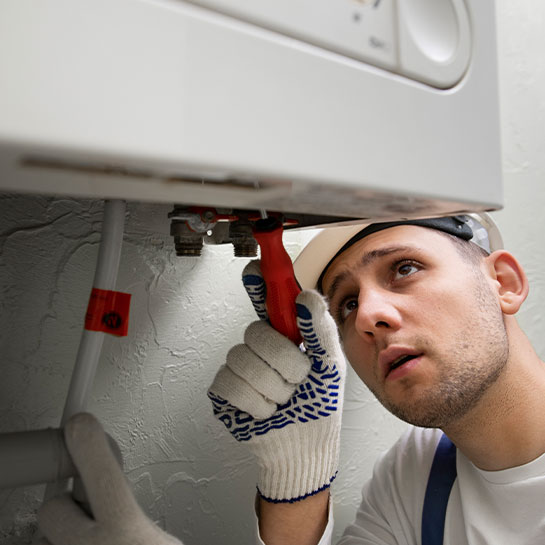A electric water heater is a tank that, through the use of heating elements, heats the water stored inside it for subsequent sanitary use. Undoubtedly, the simplicity of its operation, safety and immediacy are the main reasons why it has become one of the preferred options for users.
In fact, we are convinced that these are also the reasons why you have noticed them. But do you know what aspects you should consider when choosing an electric heater? Don’t worry, in ParaTuReforma we are going to tell you.
Tips for choosing an electric heater
To make the right buying an electric heater you have to take into account a large number of factors. These are the most important ones.
1. The capacity of the electric heater
This is the most important aspect of all, as it will ensure that all members of the household can enjoy hot water when showering. When we talk about resistance, what we are referring to is the number of liters that fit in the tank.
Keep in mind that, unlike gas water heaters, electric water heaters do not raise the water temperature immediately. Therefore, it is essential to have enough water available at all times to meet your domestic needs.
But how to calculate the capacity of the electric heater? It is very simple. Approximately, a person spends between 25 and 30 liters of hot water per day. Within that range we include both what is used for personal hygiene (shower or bathtub, sink and bidet) and for washing dishes.
Therefore, we could apply the following rule based on the most common models on the market:
- Heaters up to 50 liters. Recommended for homes where one person resides.
- Heaters of 80 liters. Recommended for homes where two people live.
- Heaters of 100 liters. Recommended for homes where three people live.
- Heaters of 150 liters. Recommended for homes where four or five people live.
Do you have six or more people living at home? Don’t worry. There are also models on the market that can hold up to 200 liters. However, if you have a large family, you will probably find other options more profitable.
2. Distribution of hot water consumption
However, every home is different when it comes to hot water demand. For example, there are households in which all members of the household need to take a shower first thing in the morning. In others, however, this action is more spread out.
In the first case, try to choose an electric water heater whose capacity is slightly higher than what you really need according to the previous rule. The reason? The water that reaches the tank takes some time to heat up. In the second case, you can opt for a smaller model and, consequently, cheaper and less energy-consuming.
Type of electrical resistance
Many users believe that all electric heaters are the same, but this is not the case. In fact, making the wrong choice can mean that the service life of your thermos flask will be significantly shortened.
The choice of the electrical resistance of your water heater will depend, fundamentally, on the level of hardness of the water in the place where you live. That is, the amount of lime it contains. Based on this criterion, we can differentiate between two types:
- Sheathed ceramic electric heaters. They are recommended for the hardest waters. The reason is simple: the ceramic is protected and never comes into direct contact with lime scale. It is true that this also means that they take longer to heat the water, but their greater durability compensates for this. Moreover, they can be replaced without emptying the flask.
- Armored electrical resistors. They heat the water faster, since they are in direct contact with it. For this reason, they are only recommended for use in places where the water has low levels of limescale.
In any case, it is of vital importance that the electric heater has a magnesium anode. Its function is to prevent wear and corrosion caused by lime scale. However, it must be replaced annually, which is the only maintenance required for this type of appliance.

4. Temperature selection
The first electric water heaters that appeared on the market did not allow the water temperature to be regulated. Generally, the liquid was heated to between 60 and 70 °C without the user being able to do anything about it. Today, they are still sold quite cheaply, but they are not the most advisable option.
On the other hand, electric heaters with adjustable temperature do offer this possibility. This is undoubtedly a very useful feature, as it saves energy at certain times of the year. For example, in summer, when the demand for hot water is not so high.
5. Energy efficiency and insulation
The energy efficiency of electric water heaters is determined by two factors. Firstly, by the electrical consumption required by the heating elements to raise the temperature of the water. This aspect depends mainly on the quality of the materials used in their manufacture.
The other factor is the level of thermal insulation of the tank. The better it is, the slower the water temperature will drop and, therefore, the less often the electrical resistance will have to be activated.
In addition, whenever possible, the water heater should be placed near the kitchen and the bathroom. Do not forget that these are the two rooms that have a greater demand for domestic hot water and that, along the way, the pipes can cause it to lose temperature.
You already have in your possession all the information you need to choose the best electric heater for your home. Now, all you have to do is take a look at our catalog and buy the model that best suits your needs. Contact us if you have any questions!


